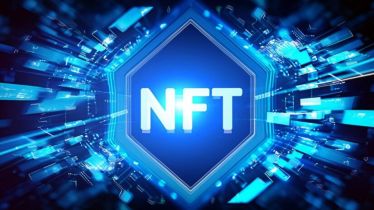Since the time non-fungible tokens (NFTs) were introduced, users seem to have found an ‘innovative’ way to approach sectors such as gaming assets, digital art, and real estate. However, the expense of owning NFTs is believed to be a topic of discussion, which can range into millions. To counter that, the concept of fractional NFTs came into light, which refers to a single NFT being segregated into parts for being traded separately. “Fractional NFTs represent ownership splits in NFTs, that allow multiple investors to collectively own a share of an NFT. The concept aims to democratise access to high-value digital assets, allowing individuals to invest in assets that would, otherwise, be financially out of reach. For example, a piece of digital art worth $100,000 can be divided into 10,000 fractional shares, each representing a share of $10. Several blockchains are considered suitable for fractional NFTs, the most prominent being Ethereum and Tezos,” Sathvik Vishwanath, co-founder and CEO, Unocoin, a cryptocurrency exchange, told FE TransformX.
From what it’s understood, fractional NFTs are depicted by ERC-20 tokens created by the fractionalisation process. For segregating an NFT, it is primarily required to be latched into a smart contract, which would lead to the creation of different ERC-20 tokens from an ERC-721 token. As per market research, fractionalisation helps investors get an enhanced amount of liquidity in the NFT sector, which can increase the amount of active NFT users. In terms of other benefits, fractional NFTs are considered capable of creating more financial facilities. As per market reports, fractional NFTs can provide use cases for sectors such as metaverse, where the NFTs can be directed towards the purchase of virtual properties and related digital assets, gaming, where the NFTs can be utilised in multiplayer games to enable in-game assets trading, and real estate, where the NFTs can be used to make investments convenient and economical.
“I think NFT fractionalisation can increase the liquidity by allowing sellers to partially sell the ownership in the NFT, which, otherwise, would be difficult to sell given their high prices. With fractionalisation, even the smallest investor can become a collector of a piece of digital art by simply buying a fractional NFT. Price discovery is also considered an important benefit of fractional NFTs, where the price of the tokenised asset is based on its market demand. When the price of an NFT increases, the value of its fractions also goes up. Seemingly, the selection of blockchain for trading fractional NFTs depends on the price, interoperability, and potential use cases of the digital asset,” Jyotsna Hirdyani, South Asia head, Bitget, a cryptocurrency exchange and Web3.0 company, highlighted.
As of February 29, 2024 (1.08 pm, Indian Standard Time), the total fractional NFT market capitalisation stood at roughly $264 million clocking a 35.9% rise in the last 24 hours, according to CoinGecko, a cryptocurrency data aggregator. The aggregator also mentioned that the 24-hour trading volume for the fractional NFT sector stood at approximately $55 million, with the largest gainers being The Doge NFT, Wen, and Feisty Doge NFT. Reportedly, metaverse companies such as Sandbox and Decentraland have entered the fractional NFT landscape. Even Axie Infinity, an NFT-oriented online video game, started to permit fractional NFTs of its game-based NFT assets, called Axies. Officially, there are 10,000 CryptoPunks NFT available, which are allowed to be purchased in segregated parts. In April 2021, 50 CryptoPunks went through tokenisation at Unicly, an NFT marketplace, to be converted into 250 million uPunks. Other platforms for users to buy fractional NFTs include Otis, Gate.io, Fractional.art, HashAxis, among others. Furthermore, future predictions indicate that fractional NFTs are a boon for investors to be able to sustain bearish periods, as this category of NFTs carries fewer risks. However, regulatory concerns are considered a factor for NFTs as they are not recognised as securities, which have been previously flagged off by the Securities and Exchange Commission (SEC).
“Future predictions for fractional NFTs include increased adoption across various industries as the technology
matures, regulatory frameworks evolving to accommodate fractional ownership structures, and
the development of more sophisticated platforms and tools for managing fractionalised NFTs,
enhancing their utility and accessibility,” Sumit Ghosh, co-founder and CEO, Chingari, a Web3.0 live streaming application, concluded.
